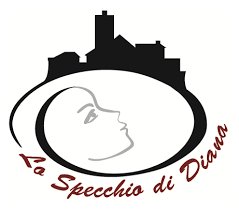Attractions Nemi
The charm of this village of ancient origins with the palace and the houses that are reflected in the blue waters of the lake, surrounded by reed beds and strawberry greenhouses, has enchanted poets and painters over the years, just as it now fascinates the numerous tourists who they constantly visit him.
Here are some of the attractions that one can visit during a stay in the smallest but most beautiful of the Roman Castles
List of services
-
Church of Santa Maria del PozzoList item 1The Church of the Madonna de' Putei Eminenti was built to replace the Palazzo Chapel which was demolished to expand the castle. The church takes its name from the original chapel, dedicated to the Madonna de' Puteo Eminenti due to its proximity to a well. In the 19th century the facade was restored and the inscription Deo et Beatae Virgini in Coelum Assumptae was added. The church has a nave with side chapels and a transept and contains an organ from 1847 from the Church of the Ara Coeli in Rome and a wooden triptych by Antoniazzo Romano depicting Christ with St. John the Baptist and St. John the Evangelist at the sides.
-
Museum of Roman ShipsThe Museum of Roman Ships of Nemi is a museum structure inaugurated in 1940 which houses two Roman boats from the 1st century AD, recovered from the bottom of Lake Nemi. After being destroyed during the Second World War, the structure was reopened to the public in 1953 and renovated in 2001. The Museum is divided into two sections: one dedicated to the ships and one to the territory, which contains protohistoric remains from the Age of Bronze and testimonies of Imperial Rome. In March 2021 a fragment of Roman marble mosaic was added, while in December 2021 a bronze beam headboard decorated with a lion's head from Caligula's first ship was brought back to the Museum, after it had been transferred to Rome for reasons of security during the Second World War.
-
Ruspoli PalaceList item 2Palazzo Ruspoli di Nemi, built in the 9th century as a castle of the Counts of Tusculum, has been owned over the centuries by various noble families such as the Monks of the Tre Fontane, the Colonnas, the Cencis and the Orsinis. After an important restoration during the Renaissance, conducted by Giuseppe Valadier, the palace develops around a cylindrical tower and a hanging garden. It still has ancient marble fragments and 18th century tempera paintings by Liborio Coccetti. In the 1990s it was sold to a private company which undertook a major restoration work, unfortunately never completed.
-
Sanctuary of the CrucifixThe Sanctuary of the Crucifix was originally a chapel dedicated to the Virgin, where the icon of the Madonna di Versacarro was brought. In 1669, the Crucifix miraculously accomplished by Fra Vincenzo da Bassiano, who despaired of sculpting the face of the Savior, was exhibited. The Sanctuary is highly revered for these two works of art: the wooden sculpture of the Crucifix and the icon of the Madonna di Versacarro, which was stolen several times, but found by the police in 2006 in Messina. The two side plates of the icon were stolen in 1975.
-
Temple of Diana NemorenseThe Temple of Diana was an important federal sanctuary of the Latin League, located on Monte Albano, which together with the Temple of Jupiter constituted the center of religious and political life. The cult was dedicated to Diana, goddess of hunting, the Parthians and the underworld. The enormous complex had an area of approximately 45,000 m2, and contained a temple, two porticoes of Doric columns, rooms for priests and pilgrims, cells for gifts, hydrotherapy baths and a theatre. Currently visible are only some parts of the complex, but numerous finds have been discovered and preserved in various museums.


